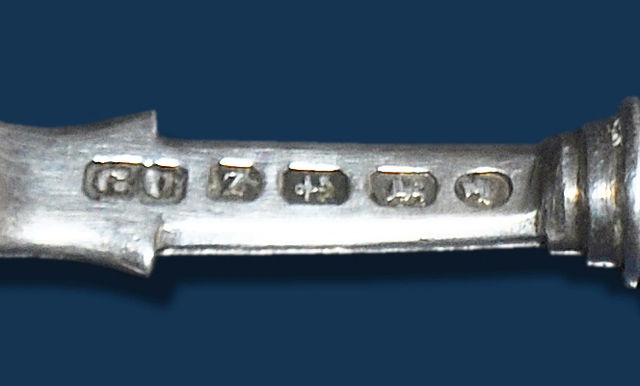A hallmark is an official mark or series of marks struck on items made of metal, mostly to certify the content of noble metals—such as platinum, gold, silver and in some nations, palladium. In a more general sense, the term hallmark can also be used to refer to any distinguishing mark.
A set of hallmarks on an English silver spoon. From left to right, the maker's mark of George Unite, the date letter (1889), the Birmingham Assay Office mark, the lion passant and the monarch's head tax-mark
Hallmark for gold
Closeup view of the hallmarks in an antique silver spoon from China
The Polish hallmarks 1963–1986
Palladium is a chemical element; it has symbol Pd and atomic number 46. It is a rare and lustrous silvery-white metal discovered in 1802 by the English chemist William Hyde Wollaston. He named it after the asteroid Pallas, which was itself named after the epithet of the Greek goddess Athena, acquired by her when she slew Pallas. Palladium, platinum, rhodium, ruthenium, iridium and osmium form a group of elements referred to as the platinum group metals (PGMs). They have similar chemical properties, but palladium has the lowest melting point and is the least dense of them.
Palladium
Palladium(II) acetate
Platinum-palladium ore from the Stillwater mine in the Beartooth Mountains, Montana, US
Sulfidic serpentintite (platinum-palladium ore) from the Stillwater mine in Montana








